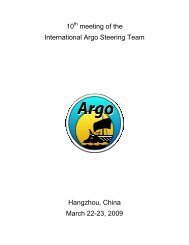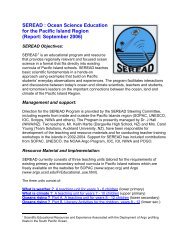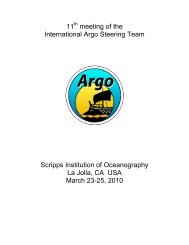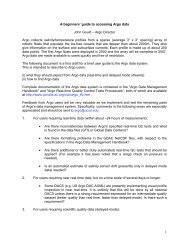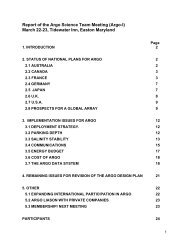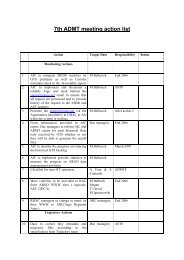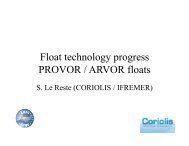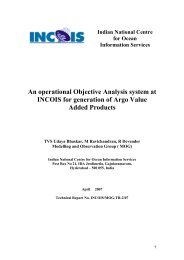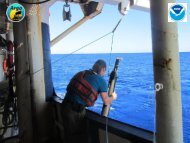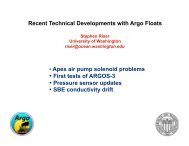AST-12 meeting report posted - Argo
AST-12 meeting report posted - Argo
AST-12 meeting report posted - Argo
Create successful ePaper yourself
Turn your PDF publications into a flip-book with our unique Google optimized e-Paper software.
7.5.2 Global Marine <strong>Argo</strong> Atlas<br />
M. Scanderbeg presented on the development of the Global Marine <strong>Argo</strong> Atlas which uses<br />
Ferret to create plots of gridded data. Currently we have a PC version of the Atlas which comes<br />
with the 4-D gridded <strong>Argo</strong> dataset made at Scripps Institution of Oceanography (Roemmich and<br />
Gilson, 2009), the Reynolds SST dataset, and the AVISO dataset. The <strong>Argo</strong> grid and the<br />
Reynolds grids are available from 2004 to the previous month, with updates available after the<br />
15 th of the month. The AVISO dataset covers the period of 2004 to October 2009 (soon to be<br />
updated through March 2010). Additionally, there is a near real time <strong>Argo</strong> dataset available with<br />
the most recent data in the past 10 days for the equatorial region. It is possible to create map<br />
plots, section plots, time series, line drawings and a few simple products. Both postscript and<br />
jpg outputs are available for plots that are created using the Atlas. Besides giving a quick view<br />
of the datasets, the Atlas is a great way to compare datasets quickly. The user can easily<br />
create similar plots with different datasets within the Atlas or the user can output a plot similar to<br />
one from another dataset. The intended audience for the Atlas includes teachers and students,<br />
government officials and scientists. To make the Atlas more appealing to classrooms, we are<br />
developing a MAC version which should be available soon. Another new feature that will be<br />
ready soon is the option to create an output file in ascii or netcdf that contains the data used to<br />
make the desired plot. We are also working on maps of temperature and salinity on density<br />
surfaces. To find out more details, visit the website at:<br />
http://www.argo.ucsd.edu/Marine_Atlas.html. Feedback is always welcome.<br />
7.6 1-page document on sustaining <strong>Argo</strong><br />
D. Roemmich reminded the <strong>AST</strong> of the 1-page document on sustaining <strong>Argo</strong> that was prepared<br />
for <strong>AST</strong>-11. He said that he had used it during the year and that it had been recently updated<br />
after other <strong>AST</strong> members had reviewed it. He acknowledged that it was very dense and not<br />
appropriate for a lay person and wondered if <strong>Argo</strong> needed something else that could be simpler<br />
and given out to lay people. A few <strong>AST</strong> members agreed to review the document further and to<br />
see if a separate document could be created for lay people.<br />
31



